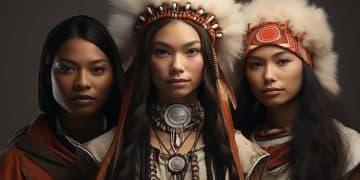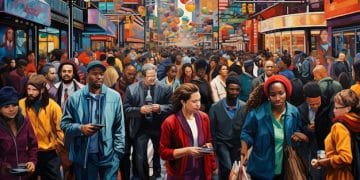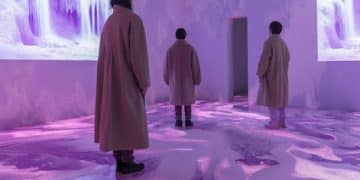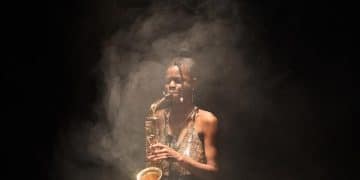American Art Evolution: From Pop Art to Post-Internet Era
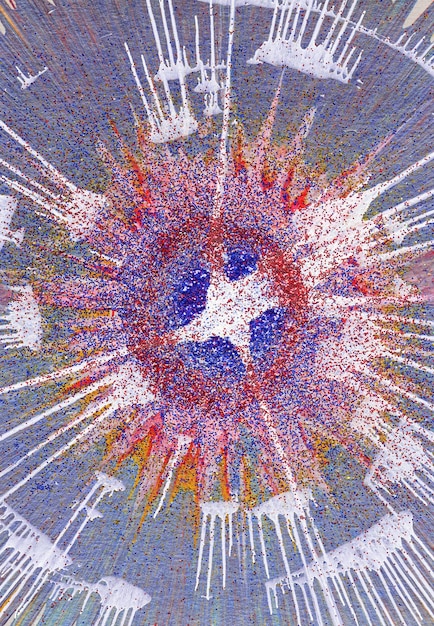
Advertisements
From the vibrant burst of Pop Art to the expansive digital landscapes of Post-Internet, American art in the last 50 years reflects profound shifts in culture, technology, and identity, continuously redefining its boundaries and engaging with an ever-evolving world.
The landscape of American art has undergone a seismic transformation over the last five decades, moving from the audacious iconography of Pop Art to the intricate, digitally native expressions of the Post-Internet era. This journey, marked by innovation, controversy, and profound societal shifts, offers a compelling narrative of how art responds to and shapes its cultural context. Tracing the evolution of American art over the last 50 years reveals not just a lineage of styles but a dynamic dialogue between artists, their mediums, and an increasingly complex world.
The Dawn of Pop Art and Its Lasting Echoes
The mid-20th century saw the United States emerge as a global cultural powerhouse, and with it, a new artistic movement that mirrored its booming consumer culture: Pop Art. While its roots precede the last 50 years, its influence permeated the subsequent decades, fundamentally altering how art engaged with everyday life and mass media. Artists like Andy Warhol, Roy Lichtenstein, and Claes Oldenburg took inspiration from advertising, product packaging, comic books, and celebrity culture, elevating the mundane to the realm of high art.
Challenging Artistic Conventions
Pop Art was a direct repudiation of the perceived elitism and abstract nature of Abstract Expressionism, which had dominated the American art scene. It proposed a more accessible, democratic art form that spoke directly to the public through universally recognizable images.
- Mass Production: Warhol’s silkscreen prints, like “Campbell’s Soup Cans,” mimicked industrial production, blurring the lines between art and commerce.
- Everyday Objects: Oldenburg’s monumental sculptures of common items, such as “Clothespin,” forced viewers to reconsider the significance of the ordinary.
- Humor and Irony: Lichtenstein’s comic strip panels, replete with Ben-Day dots and speech bubbles, injected wit and irony into artistic discourse.
This embrace of popular culture resonated deeply, not just within the art world but across society, setting a precedent for art that could be both critically incisive and wildly popular. The legacy of Pop Art is evident in contemporary art’s continued engagement with consumerism, media, and the blurred boundaries between high and low culture.
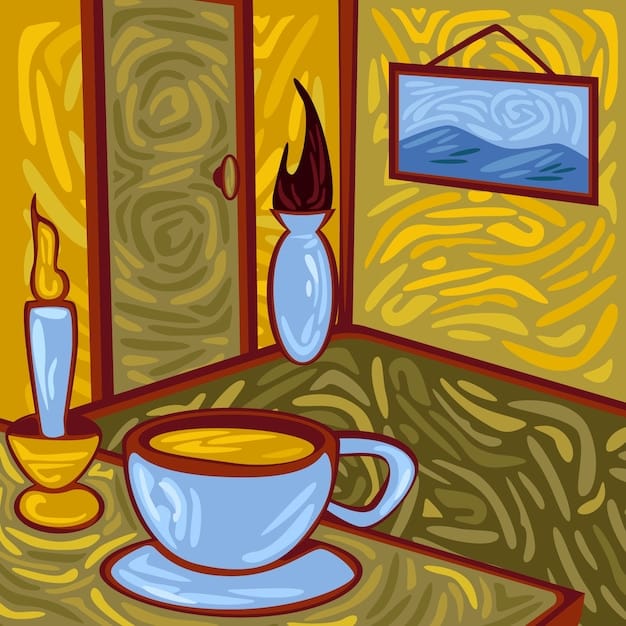
Conceptual Art and Minimalism: Ideas Over Objects
As Pop Art celebrated the visual excess of the modern world, another set of parallel movements emerged, focusing almost entirely on ideas and austerity: Conceptual Art and Minimalism. Flourishing from the late 1960s into the 1970s, these movements represented a radical shift from the aesthetic object to the conceptual framework, redefining what could be considered art.
Stripping Down to the Essentials
Minimalist artists, including Donald Judd, Dan Flavin, and Sol LeWitt, sought to strip art down to its barest essentials, using simple geometric forms, industrial materials, and repetitive structures. Their works emphasized purity of form, space, and the viewer’s experience, often removing the artist’s hand and personal expression.
- Specificity of Objects: Judd argued for “specific objects” that exist as neither painting nor sculpture but as their own category, focusing on their material presence.
- Light as Medium: Flavin used fluorescent light tubes to create installations that transformed architectural spaces, making light itself the subject.
- Instructions for Artwork: LeWitt’s wall drawings were often executed by others based on his precise instructions, highlighting the concept over the execution.
Simultaneously, Conceptual Art pushed this idea further, asserting that the “art” resided in the concept itself, with the physical manifestation often secondary or even unnecessary. Artists like Joseph Kosuth, John Baldessari, and On Kawara explored language, logic, and systems as artistic mediums.
The impact of Conceptual and Minimalist art was profound, laying the groundwork for subsequent movements that questioned traditional notions of authorship, authenticity, and the very definition of art. They encouraged a more intellectual engagement with art, where understanding the theory behind the work became as crucial as appreciating its form.
Performance and Body Art: The Live Experience
The 1970s witnessed a burgeoning interest in art that was ephemeral, process-oriented, and often confrontational: Performance Art and Body Art. These movements used the artist’s body as the primary medium, transforming the act of creation into a live, often singular, experience. This era deeply engaged with issues of identity, societal norms, and direct communication.
The Artist as Subject and Medium
Breaking away from the confines of the gallery or museum, artists like Marina Abramović (who collaborated significantly with German artist Ulay, but whose influential solo work often touched American audiences deeply), Vito Acconci, and Chris Burden pushed boundaries, using their own bodies to explore endurance, pain, ritual, and vulnerability. Their performances were often challenging, forcing viewers to confront uncomfortable truths about human nature and society.
- Endurance and Presence: Abramović’s performances, often involving extreme physical and mental endurance, highlighted the raw power of the present moment.
- Public Space Intervention: Acconci’s “Seedbed” (1972) involved him speaking to gallery visitors from underneath a ramp, exploring themes of surveillance and voyeurism.
- Risk and Vulnerability: Burden’s “Shoot” (1971), where he was shot in the arm by an assistant, provocatively questioned the limits of artistic expression and personal risk.
Body Art, a subset of Performance Art, specifically focused on the human body as a canvas or subject, often through acts of self-mutilation, endurance, or transformation. These acts were not merely spectacle but often deeply symbolic, reflecting political, social, or psychological concerns.
These movements were revolutionary, not only for their use of the human form but for their insistence on art as an active, lived experience rather than a static object. They paved the way for a more interactive and participatory art world, where the audience’s presence and engagement became integral to the artwork itself.
Identity Politics and Social Commentary: Art as Activism
The 1980s and 1990s saw American art deeply immersed in identity politics and social commentary, reflecting the cultural shifts and burgeoning awareness around issues of race, gender, sexuality, and AIDS. Artists utilized their practices as a form of activism, giving voice to marginalized communities and challenging dominant narratives. This period marked a powerful convergence of art and advocacy.
Giving Voice to the Marginalized
Artists like Cindy Sherman, Keith Haring, Barbara Kruger, and Felix Gonzalez-Torres used diverse mediums to explore and critique societal structures, often focusing on representation, power dynamics, and the personal impact of political issues. Their work was frequently provocative, aiming to spark dialogue and challenge viewer assumptions.
- Deconstructing Identity: Sherman’s “Untitled Film Stills” explored female stereotypes and the construction of identity through performative self-photography.
- AIDS Activism and Love: Gonzalez-Torres’s evocative works, such as piles of candy (representing his lover’s ideal weight) or stacks of paper (memorializing those lost to AIDS), addressed love, loss, and the public handling of private grief.
- Graffiti as Social Message: Haring’s iconic subway drawings and murals brought vibrant, socially conscious messages about public health, racism, and homophobia to broad audiences.
Photographers and multi-media artists like Carrie Mae Weems and Glenn Ligon also emerged, dissecting historical narratives and contemporary experiences related to race, memory, and representation. Their work often involved re-contextualizing historical images or texts to reveal underlying biases and power structures.
This era cemented the role of art as a powerful tool for social change and critical discourse. It broadened the scope of what American art could address, moving beyond purely aesthetic concerns to directly engage with the pressing social and political issues of the time, fostering greater inclusivity and challenging established norms.
Globalization and the Rise of Contemporary Pluralism
As the 21st century dawned, American art became increasingly globalized, marked by an unprecedented pluralism of styles, mediums, and cultural influences. The internet and increased international travel fostered a cross-pollination of ideas, breaking down traditional geographical and stylistic boundaries. The notion of a singular “American” art became complex, evolving into a multifaceted global dialogue.
A World Without Borders
This period is characterized by a vast array of artistic practices, where traditional categories often blur. Artists draw inspiration from diverse cultural heritages, technological advancements, and interdisciplinary approaches. There is no dominant single movement, but rather a rich tapestry of individual voices and experimental forms.
- Interdisciplinary Practices: Many contemporary artists work across disciplines, blending visual art with science, technology, performance, and social practice.
- Cultural Hybridity: Artists from diverse backgrounds explore themes of migration, diaspora, and multicultural identity, enriching the narrative of American art.
- Site-Specificity: A continued emphasis on artworks created for specific locations, often engaging with the history or social context of that site.
Artists like Matthew Barney, Kara Walker, and Jeff Koons represent this era’s diversity, each with a distinctive approach. Barney’s elaborate, mythological narratives explored through film and sculpture, Walker’s powerful silhouette installations on race and gender, and Koons’s playful, high-gloss sculptures engaging with popular culture and commodity fetishism, exemplify the breadth of artistic expression.
The contemporary art market also became increasingly international, with American galleries and museums showcasing artists from around the globe, and American artists gaining recognition worldwide. This era celebrates individuality and the constant push to innovate, reflecting a culturally rich and interconnected world.
The Digital Revolution and Post-Internet Art
The advent of the internet and digital technologies in the late 20th and early 21st centuries profoundly reshaped the landscape of American art, giving rise to what is broadly termed Post-Internet Art. This movement doesn’t necessarily mean art made exclusively on or for the internet, but rather art that is *informed by* the internet’s pervasive influence on culture, communication, and visual perception.
Art in the Age of Screens
Post-Internet artists, such as Cory Arcangel, Jon Rafman, and Ryan Trecartin, grew up in a world saturated with digital imagery, social media, and online interactions. Their work often reflects on the aesthetics, structures, and anxieties of this digital existence. It frequently blurs the lines between online and offline, original and copy, public and private.
- Digital Aesthetics: Incorporating elements like GIFs, memes, screenshots, and glitch art into physical and virtual works.
- Networked Identity: Exploring how identity is constructed and performed in online spaces, and the fragmented nature of the digital self.
- Information Overload: Addressing the overwhelming torrent of information and imagery in the digital age, and how it shapes perception.
This art form recognizes that the internet is no longer a separate, niche space but an omnipresent layer of reality that conditions how we see, think, and interact. It can manifest in diverse forms, from installation art that simulates online environments to sculptures that look like digital renderings, and performances that incorporate live streaming or social media interaction.
Post-Internet Art signals a crucial turning point, showing how deeply intertwined our digital and physical worlds have become. It pushes artists to grapple with new forms of authorship, distribution, and consumption, ensuring that American art continues to evolve in step with technological and cultural advancements, reflecting the complexities of contemporary life.
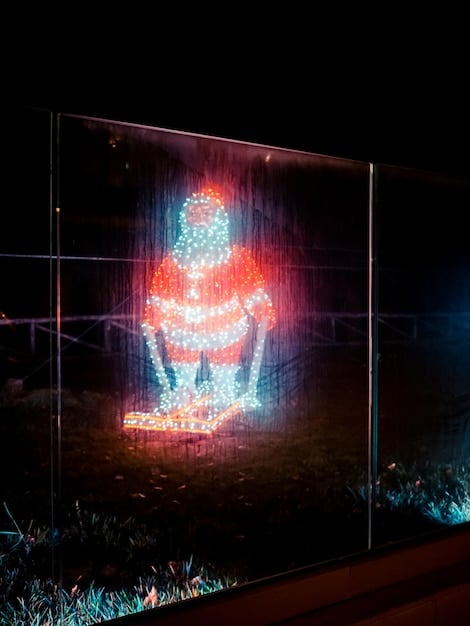
The Future of American Art: Unpredictable and Expansive
Surveying American art over the past five decades reveals a dynamic, constantly evolving field driven by innovation, social commentary, and technological advancement. From the bold statements of Pop Art to the nuanced digital explorations of Post-Internet art, each era has left an indelible mark, reflecting the changing pulse of the nation. The trajectory suggests an increasingly interconnected and multidisciplinary future.
Beyond the Canvas: New Horizons
Contemporary American art continues to push boundaries, exploring new mediums, engaging with pressing global issues, and fostering a more inclusive and diverse artistic landscape. The emphasis appears to be less on monolithic movements and more on individual artists forging unique paths, often blurring disciplinary lines.
- Sustainability in Art: A growing focus on eco-conscious practices and art that addresses climate change and environmental justice.
- Experiential Art: Continued rise of immersive installations and participatory art forms that prioritize viewer engagement.
- Artificial Intelligence and Art: Exploration of AI as a creative tool or subject, raising questions about creativity, authorship, and machine consciousness.
The dialogue between art and technology, already vibrant in the Post-Internet era, is likely to deepen, with virtual reality, augmented reality, and bio-art offering new frontiers for expression. Furthermore, as American society becomes increasingly diverse, the voices and perspectives reflected in its art will continue to expand, offering richer, more complex narratives.
Ultimately, the future of American art promises to be as diverse and unpredictable as the nation itself. It will undoubtedly continue to challenge, inspire, and provoke, serving as a vital mirror and catalyst for cultural evolution, ensuring its relevance in an ever-changing world.
| Key Milestones | Brief Description |
|---|---|
| 🎨 Pop Art (1960s) | Elevated everyday objects and mass media imagery to high art, challenging traditional aesthetics. |
| 💡 Conceptual & Minimalist Art (1970s) | Focused on ideas, pure forms, and the viewer’s experience, prioritizing concept over physical object. |
| 🎭 Performance & Body Art (1970s) | Used the artist’s body as the primary medium, creating live, often ephemeral, and controversial experiences. |
| 🌐 Post-Internet Art (21st Century) | Art informed by the pervasive influence of the internet, blending digital aesthetics with physical forms. |
Frequently asked questions about American art trends
▼
Pop Art revolutionized American art by drawing inspiration directly from mass consumer culture and advertising. Its initial impact was to challenge the perceived elitism of Abstract Expressionism, making art more relatable and accessible by incorporating everyday objects and celebrity imagery. This democratic approach fundamentally shifted the art world’s focus.
▼
Conceptual Art and Minimalism radically redefined “art” by shifting focus from the physical object to the underlying idea or concept. Minimalists emphasized purity of form and viewer experience, while Conceptual artists asserted that the art was in the concept itself, often making the physical manifestation secondary or unnecessary. This challenged traditional notions of artistic creation.
▼
Identity politics profoundly influenced American art in the 1980s and 1990s, transforming it into a powerful platform for social commentary and activism. Artists used their work to explore themes of race, gender, sexuality, and AIDS, giving voice to marginalized communities and challenging dominant societal narratives. This period highlighted art’s potential for advocacy and critical discourse.
▼
Post-Internet Art is distinguished by its recognition that the internet is no longer a separate space but an integrated layer of reality. Unlike earlier digital art, it’s not just art made with digital tools; it’s art that reflects how the internet has shaped culture, communication, and visual perception, blending online and offline aesthetics and anxieties into its core.
▼
The future of American art is likely to be characterized by increasing interdisciplinary approaches, merging art with science and technology. Emerging trends include a focus on sustainability and environmental issues, the rise of immersive and experiential art forms, and the exploration of artificial intelligence as a creative tool, reflecting an ever-evolving and interconnected world.
Conclusion
The journey of American art from the mid-20th century to the present day is a testament to its capacity for reinvention and its crucial role in reflecting societal change. From Pop Art’s bold embrace of consumer culture to Post-Internet Art’s deep engagement with the digital age, each period has contributed to a rich, complex, and sometimes controversial narrative. This evolution underscores art’s enduring power not only to capture the zeitgeist but also to actively shape our understanding of ourselves and the world around us. As new technologies emerge and cultural landscapes shift, American art will undoubtedly continue its unpredictable and expansive trajectory, constantly redefining its boundaries and engaging with pressing contemporary issues.
